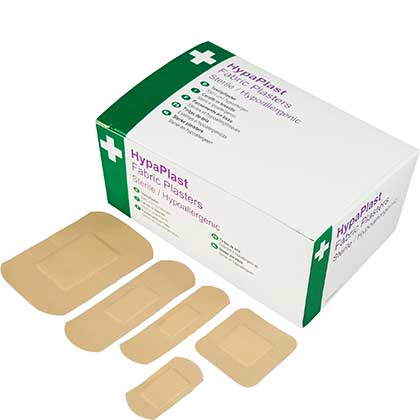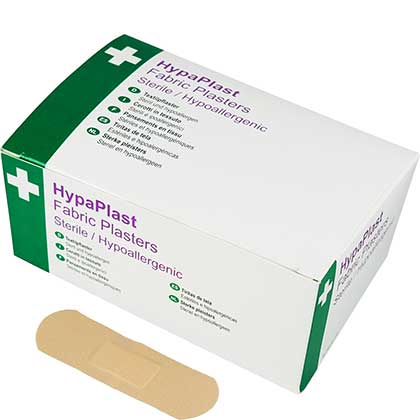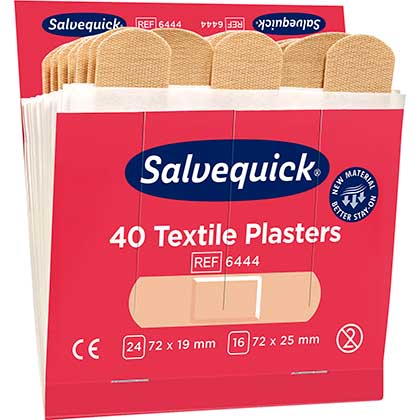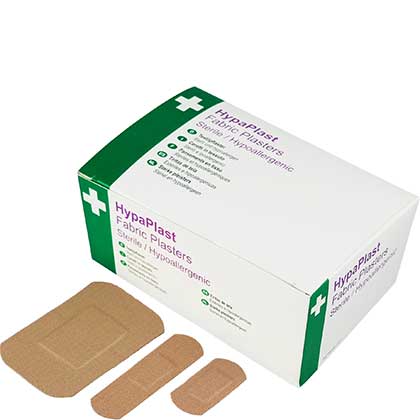
Plasters are an essential part of any first aid kit, being used to ensure that the wound remains clean while it heals. Fabric plasters are ideal for use when performing manual jobs where the use of water isn’t a factor.
What are fabric plasters?
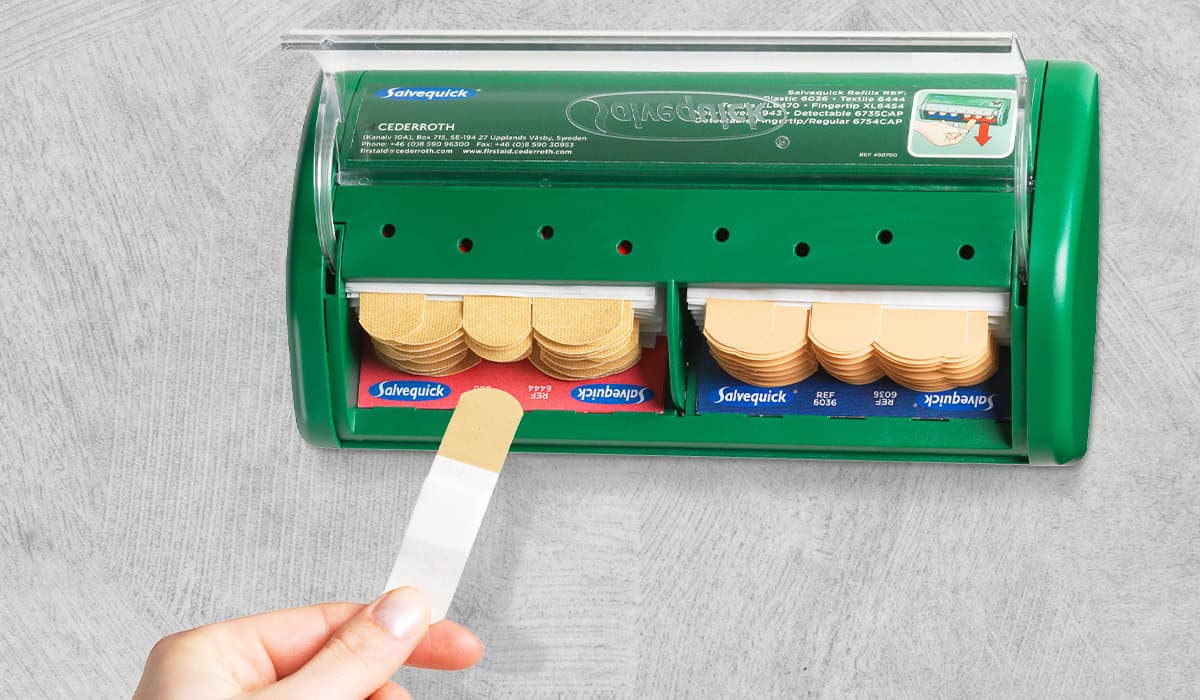
Fabric plasters are one of the three main varieties of medical plasters, the other two being waterproof or washproof and blue plasters. More information on the differences between the three can be found in this blog article.
Fabric plasters are made of several different layers, the closest to the wound being the non-stick wound pad, similar to the one on an adhesive dressing, which protects the laceration from the adhesive and germs that may get in. Then there is the adhesive layer, allowing for the plaster to stay fixed to your skin, and finally, the fabric layer, which is water-repellent to protect the wound but will lose its adhesive around too much water.
The wound pad on a plaster or a dressing is one of the main differences between them and a bandage. This is because the pad allows the plaster to be placed directly onto the wound, whereas a bandage requires an additional layer between it and an open cut.
These plasters also come in many shapes and sizes, unlike the others. For example, you are able to purchase a fabric plaster roll or strip, where you can cut a custom size from the roll, or for much larger wounds, you can buy large or XL fabric plasters.
The benefits of fabric plasters

There are three main benefits to using fabric plaster; their durability, the protection they offer and their breathability.
Durability
Fabric plasters tend to have a higher level of durability compared to other types of plasters, as long as they don’t get wet. This means that they are more likely to stay covering the wound for longer and are ideal for injuries that are on an area of the body that is frequently used for work, or if you are constantly on the go and need a plaster that won’t peel off after a couple of hours of activity.Protection
Fabric plasters offer great protection to wounds, as they don’t allow dirt or bacteria through to the wound while it is secured. This is achieved using water-repellent fabric and a strong adhesive which work together to ensure that the cut is completely covered and protected from the elements.Breathability
These plasters allow your wounds to breathe while they are protected from further injury. This means that it is unlikely to stop air and moisture from getting to your wound and that there is no need to have periods without the plaster to ensure that the wound can breathe in order to heal.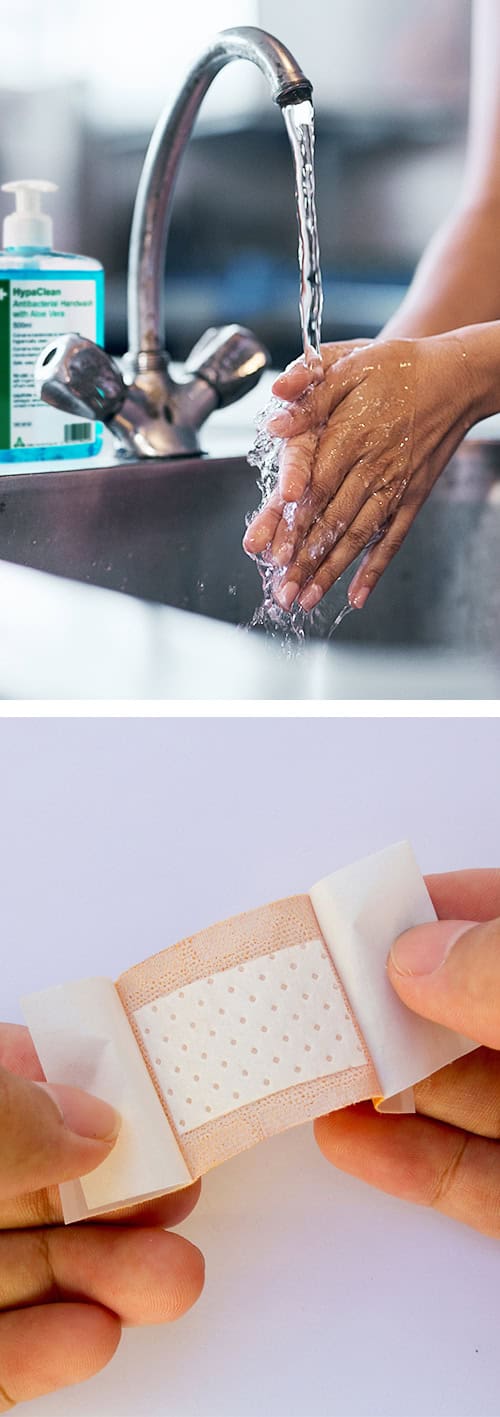 How to use fabric plasters
How to use fabric plasters
Fabric plasters are very simple to use, the method is very similar to putting on other adhesive wound dressings.
- Wash your hands. This is important so that you don’t infect the wound. If you have them available you can wear gloves, these would come in handy if you didn’t have any running water nearby.
- Clean the wound and surrounding areas. You want to make sure that there is no debris left that will cause an infection once the area is covered, although make sure to use the right wipe if you are cleaning the wound directly. Then ensure that the area you want the plaster to stick to is dry and hasn’t got any left-over moisturiser or water on it.
- Peel the backing off the adhesive. Having the backing on makes the plaster sterile. However, some workplaces may have plaster dispensers, which will remove part of the backing for you as the plaster is pulled out.
- Cover the wound with the non-adhesive wound pad. Make sure that the whole injury is covered at the same time and none of the adhesive is on the open wound.
- Secure the plaster. Press down on the adhesive area to attach it to the skin.
Some of our fabric plasters
By Sarah Mason


